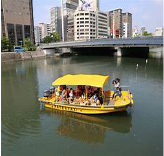THE STREET OF HIROSHIMA
The Largest Shopping Street in Chugoku and Shikoku


THE STREET OF HIROSHIMA The Largest Shopping Street in Chugoku and Shikoku


THE STREET OF HIROSHIMA The Largest Shopping Street in Chugoku and Shikoku












